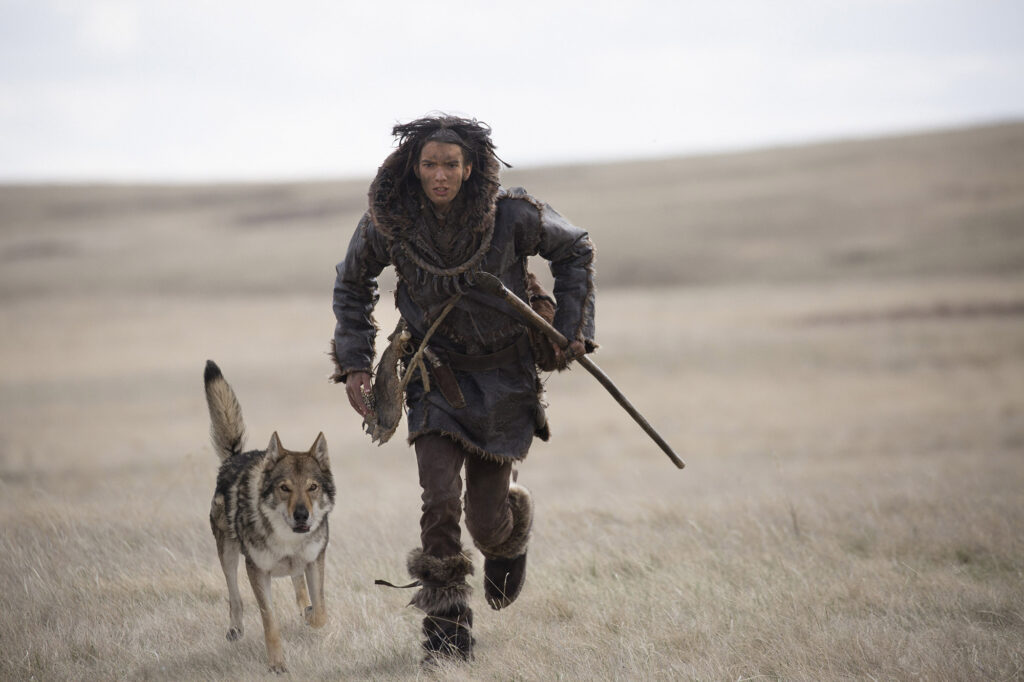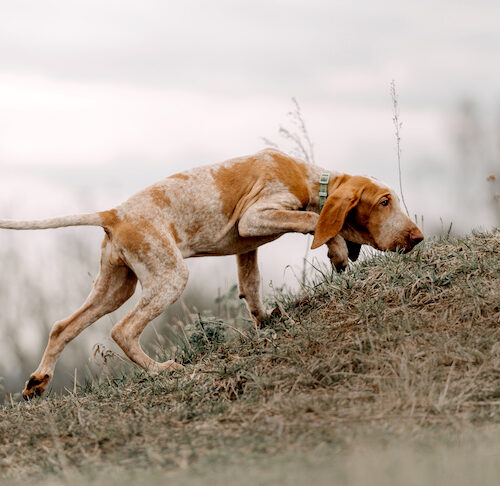Dogs are probably mankind’s oldest, most important partner in our history. Our ancient ancestors and wolves, the ancestors of our domestic dogs, area believed to have been hunting partners. They each used the other to capture more or better prey on the savannahs. Humans with weapons had the capacity to kill more effectively than did wolves, but the wolves could find prey far better, sniffing it out. That is a good combination, even if it is an uneasy partnership in the beginning. Humans domesticated wolves to become dogs, and certain aspects of the wolf were amplified for whatever purpose the human required. Sniffing out prey remains a high priority, and today we train dogs to find things that no wolf would ever seek.

Modern dogs have an extraordinary sense of smell for a mammal, and mammals themselves are generally the best smellers among land animals. Brain evolution among tetrapods (animals with four limbs: amphibians, reptiles, birds, and mammals) is complex, but traditional views emphasize that mammals have greater dedication of brain tissue to olfaction than do the others. Further, the genes connected to olfactory sensation constitute the largest family of genes among all the thousands and thousands of genes known among mammals. For mammals, it is important to be able to smell very well.
We need to differentiate smelling from sniffing. Smelling can be that odors become available and the dog detects them. Sniffing is when the dog is actively seeking information from odors. Sniffing is a real behavior that amplifies the dog’s capacity to detect odors. Inhaling air sharply, briefly, and repeatedly fills a blind cavity in the nose lined with sensitive odor receptors. Because it is a blind cavity, the odor molecules will not be expelled when the dog exhales. A surprising 12% of the air a dog sniffs goes into this system.

One problem with studying perception of odors is that olfaction is very different from the other senses. With light, there is a linear scale of wavelength that we sense and that can be quantified in the laboratory (red, orange, yellow, green, blue, violet). Sound similarly relies on a linear scale of wavelength, low sounds are long wavelength and high sounds are short wavelength. This is also easily captured by our lab machinery. Heat and force are both captured easily on a linear scale. But, what about the fragrance of fresh bread, versus frying onions, or old socks? Not a linear scale, nor easy to capture in any way. We don’t even have a clear vocabulary for capturing odors, we are forced to make comparison to other unique odors we think people have experienced. By 1916, scientists were trying to force all odors into only six main types: fruity, flowery, resinous, spicy, foul, and burned. But this loses force if someone asks “what does fruity mean?” A pineapple? A pepper? An avocado? They do not smell alike. And while blue cheese may smell “foul,” we still enjoy it. Olfaction is an enormous, multi-dimensional source of information, and we still do not know how to characterize it.

Humans do not distinguish between air coming in the left or right nostril, but dogs do. Dogs first start sniffing mostly with the right nostril. If they detect a threatening, arousing, or novel smell, they continue with the right nostril. Some readers may have noticed that when a dog is sniffing intently, it apparently does not pay much attention to vision. I have seen my own dog sniff, sniff, and sniff out a dead rodent on the roadside when it was clearly visible from many meters away. By contrast, if the smell is familiar or desirable (such as food), they start sniffing more with left nostril. What they are doing in their heads is still not understood.

Dogs are awfully good at what they are doing. According to recent authority (below), “dogs can detect the smell of a wild tortoise from up to 60 m away, a rodent in the natural environment up to 50 m, decaying meat up to 200 m, and whale scat [feces] up to 1.93 km.” Trained dogs can find drugs, explosives, contraband, some can identify if a patient has a tumor or COVID. They can follow a human track 48 hours old. They can find termites in soil or wood, disease-causing bacteria in pond water, they can identify by smell that people are frightened or happy, or they are having seizures. Some of the compounds dogs detect are in the air at only a few parts per trillion: so a few molecules per 100,000,000,000,000.

Regarding utility to humans, I am delighted to share with readers the report from the National American Orchid Conservation Center that trained dogs can find rare orchids in the woods. What a wonderful trajectory, from killing ice-age mammals to saving today’s rare orchids. That is a good partnership.
For an authoritative review of olfaction in dogs, see this technical paper from the National Institutes of Health: https://www.ncbi.nlm.nih.gov/pmc/articles/PMC8388720/#B14-animals-11-02463

